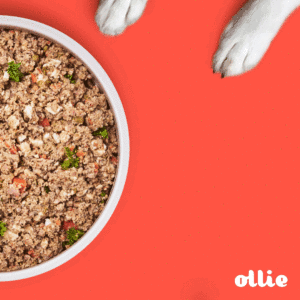Can Dogs Eat Pesto?
Can Dogs Eat Pesto?

Pesto is an Italian sauce made with a variety of ingredients, including basil, pine nuts, and Parmesan cheese. This is a flavorful and healthy dip, perfect for topping pasta, salads or sandwiches. You can use pesto as a sauce for many different dishes, such as chicken or fish. It’s also good on pizzas or as a dip for vegetable sticks.
Although pesto is a very versatile condiment, it can be dangerous for dogs. Pesto is made with nuts and other foods that are generally not safe for dogs in large amounts. If you’re wondering whether your dog can eat pesto, the answer is yes, but only in moderation.
What is pesto?
Pesto is a traditional Italian sauce that is made with basil, Parmesan cheese and often nuts. Pesto is typically eaten on pasta, but it’s also great on salads or as a dip for vegetables. In addition to basil, pesto can also be made with cilantro, mint, dill, and many other herbs.
Can dogs eat pesto?
Yes, but only in moderation. Pesto contains nuts and cheese, which are not healthy for dogs to eat in large amounts. For this reason, it’s a good idea to only give your dog a small amount of pesto. If you do decide to feed your dog pesto, make sure that you only give her a small amount and don’t feed it more than once a week.

What ingredients are in pesto?
The ingredients in pesto vary from recipe to recipe, but most pestos have basil, garlic and Parmesan cheese as their main ingredients. They may also contain nuts such as pine nuts or walnuts. Herbs such as parsley and mint are also sometimes added to pesto.
Is pesto safe for dogs?
In moderation, yes. Although the ingredients in pesto are generally safe for dogs to eat (especially the basil), this sauce is very high in fat and calories – especially if it contains nuts or cheese. If your dog likes pesto and you’re wondering whether he can eat it, try leaving out the nuts. You might be surprised at how much he enjoys the flavor.
Can dogs eat pesto? Benefits
Pesto is a good source of protein. It’s also a good source of vitamins, minerals and other nutrients. While almonds are the main ingredient in pesto, it also contains a variety of other vitamins and minerals. The following are examples of some vitamins and minerals found in pesto:
Vitamin A – Vitamin A plays an important role in maintaining healthy skin, hair and teeth. It can also be important for eye health.
Vitamin C – Vitamin C is an antioxidant that plays an important role in immune system health. It can also reduce the risk of cardiovascular disease, cancer and many other illnesses.
Vitamin E – Vitamin E is a powerful antioxidant that can promote heart health, promote immunity, and protect skin integrity.
Iron – Iron is a necessary nutrient for many aspects of health. It’s especially important for muscular health and growth.
Protein – Protein plays an important role in many bodily functions, including muscle growth and repair.
Potassium – Potassium is a mineral that plays an important role in regulating heart rate and blood pressure. Potassium can also be very important for a healthy digestive system.
Calcium – Although it’s not the main source of calcium in pesto, it’s an excellent source of calcium.
Magnesium – Magnesium is an important nutrient for many bodily functions. It can also promote overall health and wellness.
Can dogs eat pesto? Potential side effects
Although pesto is very healthy, it can also have some side effects in certain dogs. Side effects can include:
-Digestive problems – Some dogs won’t be able to handle large amounts of nuts. If your dog is one of those dogs, she can develop digestive problems after eating pesto. If you notice that your dog is having stomach-related issues after eating pesto, try leaving out the nuts.
-Diarrhea – Diarrhea is also common in dogs that aren’t able to digest nuts well.
-Vomiting – If your dog vomits after eating, she may be sensitive to the nuts that make up pesto.
-Bloating – Dogs that aren’t able to digest nuts well can develop bloating and gas.
-Excessive saliva production – Some dogs will develop excessive saliva production after eating nuts. This is a condition called nutmeg or nut allergy. If your dog develops excessive saliva after eating pesto, she may also develop an allergic reaction. This is especially true if your dog is also allergic to basil.
Can dogs eat pesto pasta?
As mentioned above, pesto is a great topping for pasta. Although you would never put pesto on your dog’s food, you can feed her pesto on her own food.
Pesto can be a great addition to any meal. For example, you could put pesto on your dog’s healthy dog food and then add some extra vegetables. Your dog would love the extra flavor, and you would get a serving of vegetables along with the protein.
However, you should limit the amount of pesto that you feed your dog. Any fat, sodium or salt that’s added to the food can make your dog sick.
Conclusion, Can dogs eat pesto?
Pesto is a great condiment, but your dog shouldn’t be eating it on a regular basis. The sauce is rich in nutrients, but it also contains nuts, which can be dangerous for dogs. If you’re wondering whether your dog can eat pesto, the answer is yes.
It’s fine to use pesto as a condiment or in moderation, but your dog shouldn’t eat it on a regular basis.
If you’re interested in trying out pesto, you could make a batch of pesto and freeze it. If your dog likes the flavor, you could also buy some pesto for him if you want to get him started.
In either case, you should try to feed him pesto in small amounts and monitor how he responds. If he seems fine after a few bites, you could also gradually increase the amount of pesto that you feed him.
We hope this helped answer your question, can dogs eat pesto? Thank you
As always here at candogeat.org we believe in feeding your pup a homecooked healthy meal plan. This can greatly improve the health of your dog.
We are not veterinarians though so if you have questions about your dogs health contact a veterinarian.




